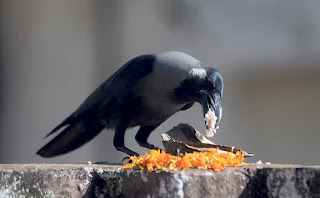Dashain is celebrated by the hindu followers all over Nepal. It if the festival that brings happiness and delivers the message of unity among people. This festival signifies unity, the victory of truth, and the inception of happiness. Dashain generally falls in the month of September or October and lasts for 10 days. It is also called as bijay dashami or durga puja.During dashain we can see flying kites on the sky. People enjoy by playing kites and swings.
Day 1: Ghatasthapana
Every household on this day plant jamara which is an important element of this festival.They sow barley seeds mixed with corn and wheat in a small pot made up of mud, sand. The seeds, sown at the altar of goddess Durga, are watered every morning and evening. On the 10th day, it will grow and ready to use during tika ceremony.
Day 7: Phulpati
On this day people bring Phulpati on the house . Phulpati is also called as saptami. Phul means flowers and pati means plants or leaves. Usually at Phulpati, people clean and decorate house.
Day 8: Maha astami
The eight day of vijaydashami is called Maha astami. On this day, Goddess Durga Bhawani and kali mata are worshipped with very high dedication. People sacrifice animal to the goddess.
Day 9: Mahanavami
The 9th day of Dashain is known as Mahanavami. Kali’s and Durga’s temple is full of the devotees to worship them. It is the last day of navratri. On this day, all the machinery items like bus, car, bike, cycle including household things like knife, axe, khukhuri are worshipped.

Day 10: Vijaya Dashami
Vijaya dashami is the most auspicious and tenth day pf Dashain. In this day, the elder person in the house usually parents put Tika ( a mixture of rice, yoghurt, and vermillion powder ) and jamara ( sacred yellow grass ) and provide blessings with dakshina(money) and gifts. People usually travel to the relative house to put tika and blessings from elder ones.This tradition lasts upto four days. Relative gather together and have varieties of foods.
Tihar
Tihar is the five-day festival of lights. Tihar is also called as Diwali and Deepawali. During this festival, people will honour crows, dogs, cows as well as Laxmi , the goddess of wealth and luck. As numerous candles and festive lanterns will be lit up for the goddess of Laxmi.
Day 1: Kaag tihar / Crow day
On the first day of Tihar festival, people will offer rice to the crows, ‘The messenger of death’. These crows are busy a year round, and only have this day to rest. It is important to ensure that the crows are happy, otherwise they will inform the bad news, and bad things would happen in this coming year.
Day 2: Kukur Tihar / Dog day
The second day of Tihar festival is called Kukur tihar. On this day, Nepalis will honor dogs for they believe that the dog can guarantee the souls of the dead to get to heaven. People usually wear dogs with Tihar Tika and calendula garlands, and then treat them with a fancy dinner. Nepalese policemen will present beautiful garlands to the patrol dogs and paint their foreheads in red cinnabar to thank for their contributions in social security.
Day 3: Gai Tihar and Laxmi puja
On the third day of Tihar Festival, Nepalese often worship cows and Laxmi, the goddess of wealth. This day is also the most important holiday in the festival. People would get up early and clean the room thoroughly. Hence, they start to thank cows. After a cozy bath, those cows will wear red Tika and beautiful wreaths, with holy strings from the priest tied to their tails. When the night falls, dazzling candles, oil lamps and bright lights are lit up at the doors, steps, even on the roof. All the Nepalis will make their home as luminous as possible to attract Laximi's attention. At this moment, Nepalis kids won't be idle. They come to visit neighbors in small groups and sing Tihar songs like Bhailo and Deusi for blessings. In return, the house owner give them money, fruit and sweets.
Day 4: Goru puja, Govardhan puja and Maha puja
The fourth day of Tihar is called Govardhan Puja, where the ox is worshipped and celebrated. The ox is seen as an analogue to the cow in Hinduism, as the ox provides manual labor, especially important for an agricultural country like Nepal.
Day 5: Bhai Tika
The last day of Tihar is knowned as Bhai Tika. On this day, brothers and sisters will gather together and accept Tihar quotes on their foreheads. After placing the multi-colored Tika and splendid garlands to the brothers, the sisters would offer them some Shaguns (a kind of candy) as Tihar gift. And then the brothers would follow the same ritual to put Tika on their sisters and give them some money in return. This celebration has enhanced the close relationship between brothers and sisters.
Thank you!!!!












No comments:
Post a Comment